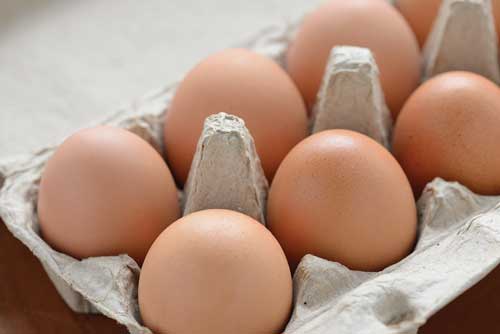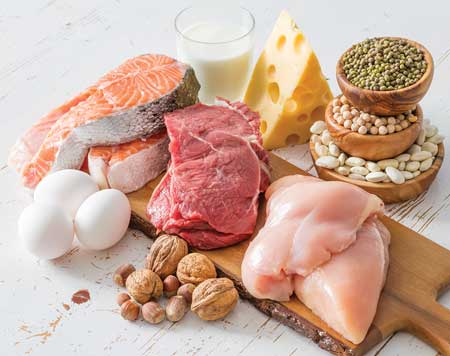Edible films reduce food waste; Killing Salmonella in eggs
NEWS
Edible films reduce food waste
Creating edible films from residues leftover from fruit and vegetable processing could reduce food waste and serve as a sustainable way to add value to products, according to a study in the Journal of Food Science.
Residues from fruit and vegetable processing represent a rich source of nutrients, primarily biopolymers and bioactive compounds. These biopolymers demonstrate film-forming properties, and according to tests performed during the study, “fruit and vegetable residues demonstrated a good potential for application in the preparation of edible films and may be a means to promote the use of these residues largely discarded by [the] food industry, reducing food waste in addition to the costs of disposal of this material.”
The researchers conclude that reusing these residues in film form would allow for a sustainable process for creating value-added products. “Food manufacturers can incorporate the edible films as packaging or ‘covering’ of the food that can be eaten along with the food,” explains Roberta Melquiades, one of the study’s authors. “The combination of the edible film with food can offer particular physical and chemical protection and increase the bioactive compounds content, as well as improve sensory characteristics. Moreover, as packaging, to be an alternative to raw materials derived from petroleum, promotes sustainability for the processing.”
 Killing Salmonella in shell eggs
Killing Salmonella in shell eggs
Immersing shell eggs in a hot water bath inactivates heat-resistant Salmonella while leaving the eggs in an acceptable state and may be used to prevent food illness, according to a study that appeared in the Journal of Food Science.
In the study, eggs were inoculated with strains of Salmonella Enteritidis (SE), a heat-resistant form of the pathogen. The eggs were immersed in a circulating hot water bath for various times and temperatures, and researchers found that SE was reduced by 4.5 log at both hot water immersion treatments of 56.7°C for 60 minutes and 55.6°C for 100 minutes. While the quality of the eggs showed some degradation—albumen height significantly increased and yolk index significantly decreased—the researchers conclude that the eggs should still be acceptable. They add that processing eggs via this method could prevent many thousands of food illnesses in the United States.
When it comes to using these eggs, consumers may need to adjust their baking methods to achieve their desired results, according to David Geveke, one of the study’s authors. He and his colleagues tested the eggs in an angel food cake application and found that cakes achieved nearly the same volume and texture as a regular cake when the whipping time was increased by three times; adding air helps overcome the denaturation of the proteins. His team plans to test cornbread next.
 Protein increases satiety
Protein increases satiety
Though it has been commonly understood that protein can help people feel fuller, no large-scale test had been done to confirm this. In a study that appeared in the Journal of the Academy of Nutrition and Dietetics, researchers conducted a systematic review of the evidence on the effect of protein intake on perceived fullness and confirmed that protein increases satiety.
“A good deal of evidence suggests that protein activates satiety hormone release and so should be most strongly tied with fullness ratings,” says lead investigator Richard D. Mattes, Distinguished Professor, Dept. of Nutrition Science, director of public health, and director of the Ingestive Behavior Research Center at Purdue University, “but individual studies are often conducted in small populations or with different approaches that can make interpretation of results challenging. Our study combined multiple experiments to confirm the presence of an effect.” The researchers analyzed data using meta-analysis and directional analysis, and both methods indicated that higher protein loads have a greater effect on fullness than lower protein loads.
The study did not determine the exact amount of protein needed to prolong fullness, and though it did not specifically target dieters, the researchers suggest that feelings of fullness linked to protein consumption might help reduce food intake.
 Fear Babe promotes sound science
Fear Babe promotes sound science
In the digital age, misinformation spreads more quickly and easily than ever—and the Internet never forgets. But there is an opportunity to use these untruths as a framework to reveal scientific facts, according to Kavin Senapathy, one of the authors of The Fear Babe: Shattering Vani Hari’s Glass House, a book that aims to combat the spread of misinformation about the food industry.
The book, which was coauthored by science communicators Mark Alsip, Marc Draco, and Senapathy, tackles a variety of subjects that Vani Hari—otherwise known as the Food Babe—and others find contentious, including chemicals, genetically modified ingredients, and additives. Drawing on scientific facts, the authors address the misinformation dispensed by Hari and others like her, acknowledging that while some of these figures may have good intentions behind their messages, they are ultimately causing damage by spreading information that is not backed by science.
Senapathy says that her Fear Babe coauthors take an approach that is very different from activists like Hari. Unlike Hari, they are committed to supporting their claims with valid scientific data and are willing to engage with those who do not share their views. This kind of conversation, says Senapathy, is a key way that food scientists and researchers can help fight confusion about the work they do.
“Any scientist who is engaging is commendable,” says Senapathy, and she advises those who are willing to speak out on social media or to the public at large to run their wording by a layperson to make sure the message is coming through clearly. Spreading science to the public is not as simple as pointing to a study, she adds.
Senapathy also advises potential science communicators to be patient with the process. Talking about science isn’t a sprint, she says—it’s a marathon, and if scientists can get through even to just a few observers or fence-sitters at a time, that should be considered progress.
--- PAGE BREAK ---
Clean label tops trends
Is ‘nothing artificial’ the new natural?” asked Lynn Dornblaser, director, innovation and insight, for research firm Mintel, during her 2016 North American Food & Drink Trends presentation at FONA International on March 14. Consumers are increasingly demanding products free from artificial colors, flavors, and sweeteners, and new product introductions with these ingredients are slowly but steadily declining. Consumers want products free from what they perceive to be “bad,” but these products must also taste great, explained Dornblaser. She pointed to Kraft’s recent reformulation of its iconic Blue Box mac & cheese as a successful example.
Consumers are also interested in meat and dairy alternatives, but for different reasons than in the past. Now they are looking to these as options for exploration in a varied diet that may also contain meat and dairy. Dornblaser sees great opportunity for companies to make these alternatives as interesting and tasty as they can.
Dornblaser touched on several other trends, including a reversal of the vilification of fats trend and a move toward the celebration of “good” fats. She also emphasized the importance of companies large and small telling compelling stories about their products and suggested companies create environmentally friendly products that not only employ recyclable packaging but also address water use, food waste, and even bee colony collapse.
News Bites
• Archer Daniels Midland Co. reached an agreement to purchase a controlling stake in Harvest Innovations, a leader in minimally processed, expeller-pressed soy proteins, oils, and gluten-free ingredients.
• Ardent Mills joined Field to Market: The Alliance for Sustainable Agriculture as an associate member.
• IFT professional member Bob Roberts of Pennsylvania State Univ. was featured in an Eater.com video about the school’s ice cream courses.
• DuPont Industrial Biosciences and Archer Daniels Midland Co. developed a method for producing furan dicarboxylic methyl ester (FDME) from fructose. It can be converted into a number of high-value, biobased chemicals or materials that can deliver high performance in a variety of applications.
• ederna announced that its evapEOs evaporating system was selected for trials at Cornell University’s Dept. of Food Science.
• Eurofins Microbiology announced its new, state-of-the-art, ISO 17025–accredited laboratory in Louisville.
• Imbibe announced it is now offering organic certified flavors and strategic ingredient systems as part of its comprehensive beverage development portfolio.
• Kellogg Co. exceeded its hunger relief milestone to provide 1 billion servings to those in need.
• Lallemand acquired Mississippi-based USA Yeast.
• Mars collaborated with IBM to create the Consortium for Sequencing the Food Supply Chain, a food safety platform that aims to draw upon technological advancements in genomics to improve understanding of food safety. It also announced it will remove artificial colors from its human food products, which it expects will take about five years.
• Mühlenchemie and its sister companies DeutscheBack and SternEnzym have greatly enlarged their facilities for applications research.
• Nestlé Health Science is investing roughly $42.5 million in Pronutria Biosciences, a U.S. startup that is developing amino-acid based products with the potential to treat serious medical conditions.
• The North American Branch of the International Life Sciences Institute is soliciting nominations of individuals to be considered to receive its 2017 Future Leader Award. Nominations are due June 17. Click here.
• NSF International acquired Euro Consultants Group, a leading food safety and quality service company based in Wavre, Belgium.
• Oklahoma State University received a $100,000 gift from Lopez Foods to support the school’s food safety program.
• Pure Foods opened its global headquarters and primary manufacturing location in Kingsport, Tenn.
• QualiTech received supply chain certification from the Roundtable on Sustainable Palm Oil.
• SaltWorks achieved SQF Level 2 certification with an “Excellent” rating from NSF International.
• Savoury Systems International redesigned savourysystems.com to create an enhanced user experience, especially for use on mobile devices.
• Surlean Foods announced plans to expand its Dallas production facility.
• Syngenta announced that Beijing-based ChemChina has offered to acquire the company.
• Takasago International Corp. announced that it acquired Rockingham, N.C.–based Centre Ingredient Technology.
• The U.S. Dept. of Agriculture awarded $30.1 million in competitive grants to fund 80 research projects to improve food safety, reduce antibiotic resistance in food, and increase the resilience of plants in the face of climate change.
• The U.S. Food & Drug Administration announced a grant program to establish regional centers for food safety training, outreach, and technical assistance.
• Wageningen University and Vandinter Semo established a certified chain for producing and processing gluten-free oats.
• Wixon announced that it redesigned its website, wixon.com.
• Nominations for The World Food Prize are due May 1, and nominations for The Norman Borlaug Award for Field Research and Application are due June 30. Click here.
 Melanie Zanoza Bartelme, Associate Editor
Melanie Zanoza Bartelme, Associate Editor
[email protected]
